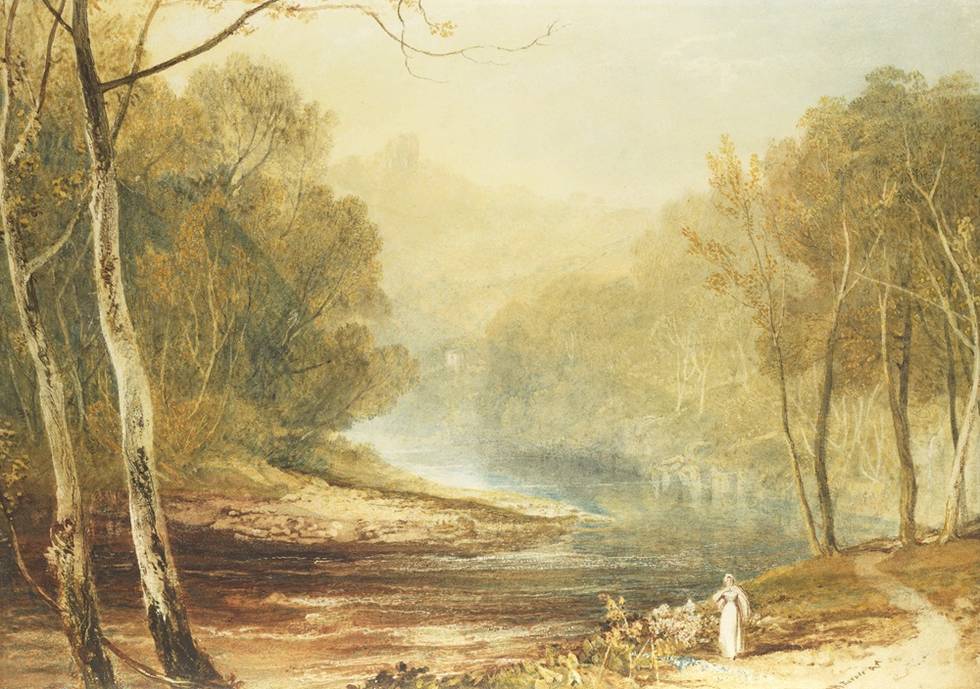Our fourth and final watercolour by Turner is this view of Hackfall, five miles north-west of Ripon, in North Yorkshire. This picturesque valley of the River Ure had been landscaped in the 18th century by William Aislabie with follies or ‘eye catchers’, as they were then known, including Mowbray Castle, an artificial ruin on highest outcrop, with Fisher’s Hall, the white building, below it. The site was considered ‘one of the most picturesque scenes in the north of England.’ Turner chose Hackfall as one of the spectacular sites of Yorkshire he visited as part of a sketching tour in preparation for the creation of 120 watercolours of views of the county for a seven-volume publication The History of Yorkshire, which was abandoned in 1819.

Turner undertook this journey in August, partly in the company of Walter Fawkes, in the same month as the shooting party at Beamsley Beacon, and in fact is based on a drawing that immediately follows the shooting party scenes in the Large Farnley Sketchbook (Hackfall on the River Ure). The viewpoint is the same as that in the final watercolour of the fast-flowing river Ure under the vast canopy of trees, and where the lack of human presence is particularly striking.
That year, Turner was in Yorkshire for the first day of shooting, 12 August, and left on 16 September. In the end, only 20 watercolours were completed and the project was abandoned.
The bright watercolour is permeated by light. Turner has raised the elevation of Mowbray Castle to make it even more spectacular. The thin layers of paint allow the whiteness of the paper to shine through. Although detailed, it is quite loosely painted, which indicates that it was painted quickly. The sense of the fast-moving water of the river at its sharp bend is created by the subtle blending of the complementary colours green and maroon, while the ripples of the waves are created with scratched-out whites. The tree trunks of the birch trees are white, which indicates that Turner masked them out and painted around them, and then added dark details of the bark with a really dark chestnut-red paint. Turner has left fingerprint marks in the wet paint to create texture. In the watercolour, the woman on the path adds a useful sense of scale to the composition, as well as reminding Turner’s patrons of the solitary figures of shepherds with their flocks in Claude’s pastoral visions. As with the rest of the series, Turner has incorporated his signature into the image, along the track, close to the woman.
Henry James, who saw the four Turner landscapes exhibited at the Bethnal Green Museum in 1873, contended that this painting ‘proves that the painter could paint slumbering yellow light at least as skilfully as drifting dusk [exemplified for him in Grouse Shooting]. The way in which the luminous haze invests and caresses the castle-crowned woody slope which forms the background of this composition is something for the connoisseur to analyse, if he can, but for the uninitiated mind simply to wonder at.’